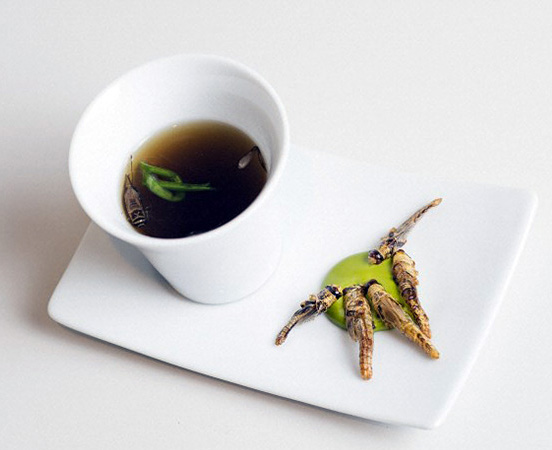by Nurdin Topham.
Recipe development for our Pestival menu, by Nurdin Topham – now Head Chef at NUR in Hong Kong
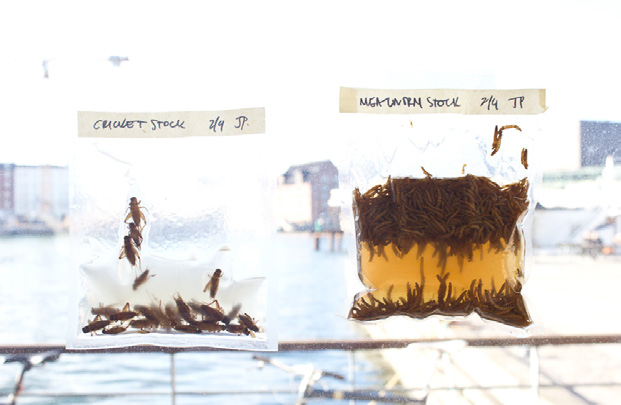
As part of our own learning process we tried making some simple stocks to taste the inherent flavour of these different creatures, and to determine which was the optimal proportion of insect to use to impart the flavour.
After trying 10%, 20%, 30%, 40% we found that 20% was sufficient.
Once determining our basic ratio, we began adding a few more variables with the following recipes cooked sous vide at 85˚C for 1 hour.
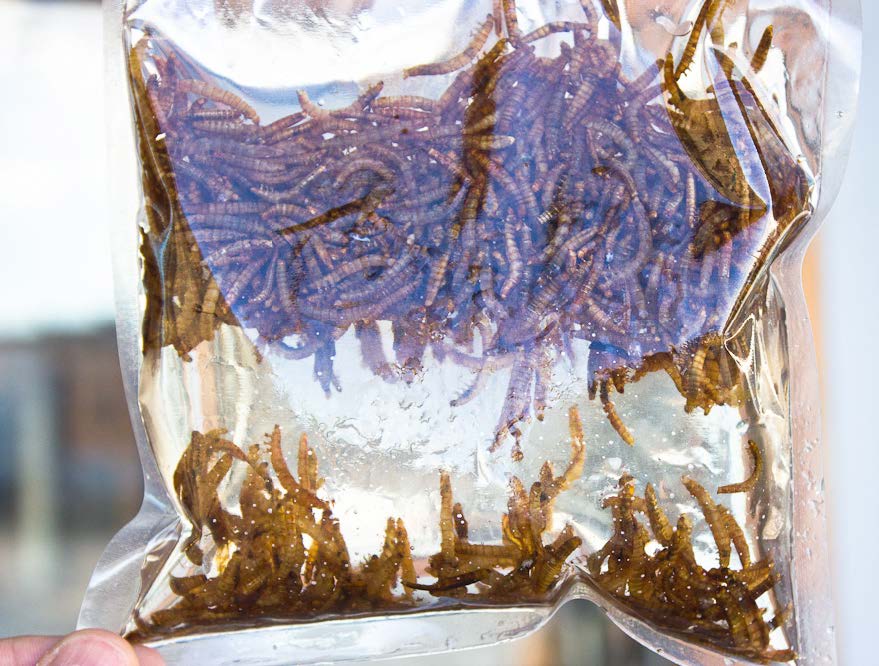
White stocks
1. Cricket
60g 20% Crickets
0.5g 0.1% Sea salt
300g 100% H20
2. Cricket & Kombu
60g 20% Crickets
0.5g 0.1% Sea Salt
2g 0.6% Kombu
300g 100% H20
3. Meal worm
60g 20% Meal worms
0.5g 0.1% Sea Salt
300g 100% H20
4. Meal worm & Kombu
60g 20% Meal worms
0.5g 0.1% Sea Salt
2g 0.6% Kombu
300g 100% H20
Brown stocks
5. Cricket
60g 20% Crickets, roasted 12 minutes @ 160˚C w/ 5g rapeseed oil
0.5g 0.1% Sea Salt
300g 100% H20
6. Cricket & Kombu
60g 20% Crickets, roasted 12 minutes @ 160˚C w/ 5g rapeseed oil
0.5g 0.1% Sea Salt
2g 0.6% Kombu
300g 100% H20
7. Meal worm
60g 20% Meal worms
0.5g 0.1% Sea Salt
300g 100% H20
8. Meal worm & Kombu
60g 20% Meal worms
0.5g 0.1% Sea Salt
2g 0.6% Kombu
300g 100% H20
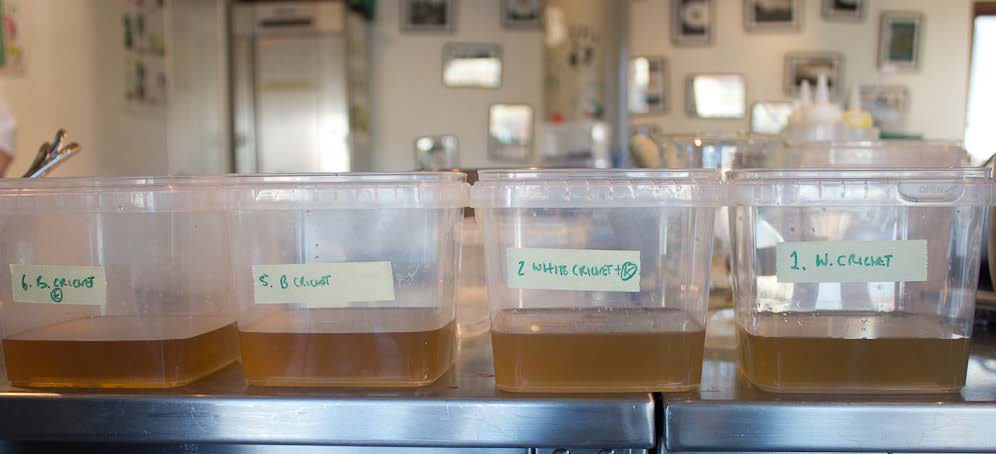
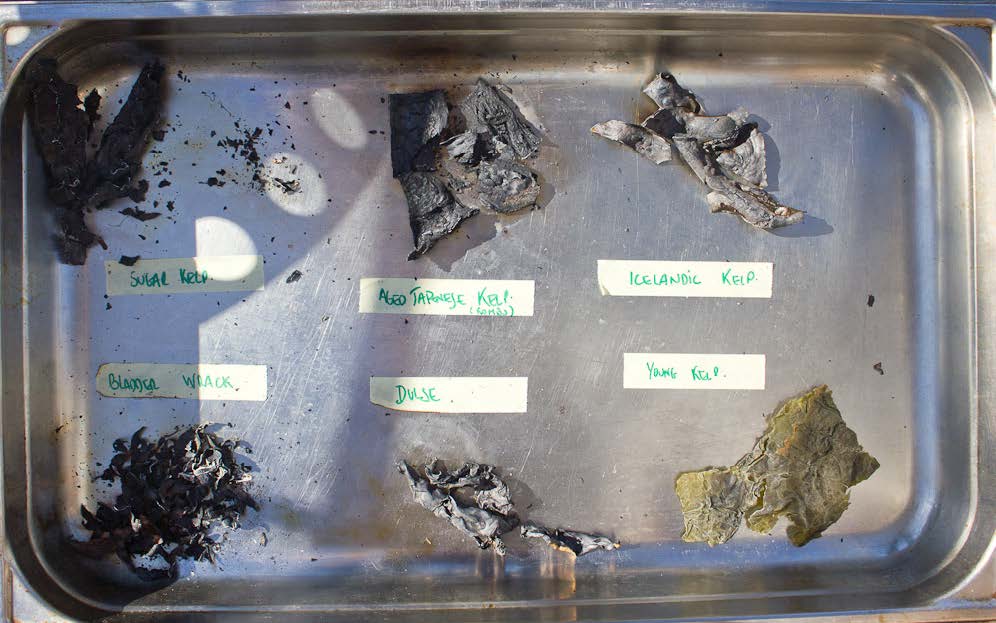

Conclusion
The brown stocks were on the whole better than the white. With the browning masking some of the ‘unpleasant insect’ flavours. Cricket stocks were the more pleasant, naturally sweet and reminiscent of a prawn with a rounded biscuity savoury flavour. The Meal worm flavour was distinctively unpleasant – the aroma and flavour was hidden and improved with roasting which gave rise to chicken skin flavours and a crispy texture.
During a research visit to the Copenhagen zoo we learnt that often crickets’ diet is based on 1/2 cereals and 1/2 fish feed. We wondered to what extent the fish feed influenced the flavour of the crickets – more work could explore the effects of different feeding regimes on flavour. After speaking to different suppliers, we found crickets fed on grasses, not on fish food, and this improved the flavor dramatically.
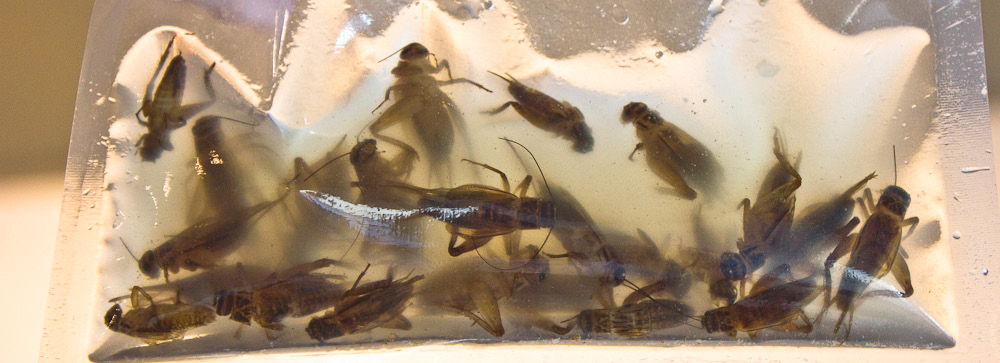
Cricket Broth
After these initial trials we decided to pursue a broth as a concept to present the pure taste of insect. So we continued to investigate how to best obtain this purity of flavour.
Our first task was to try testers of different stock cooking methods – in a pan, sous vide, and in the pressure cooker. We found sous vide to provide the cleanest flavour.
Some notebook diagram notes:
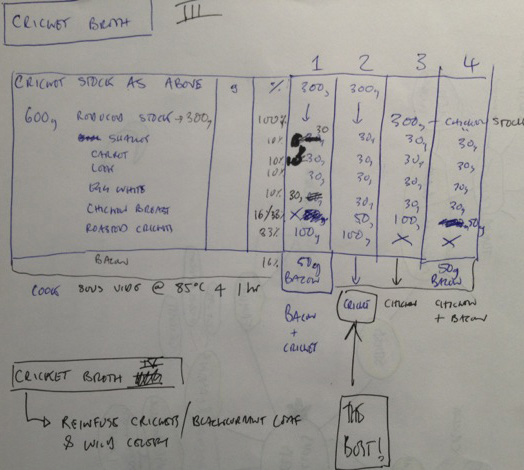
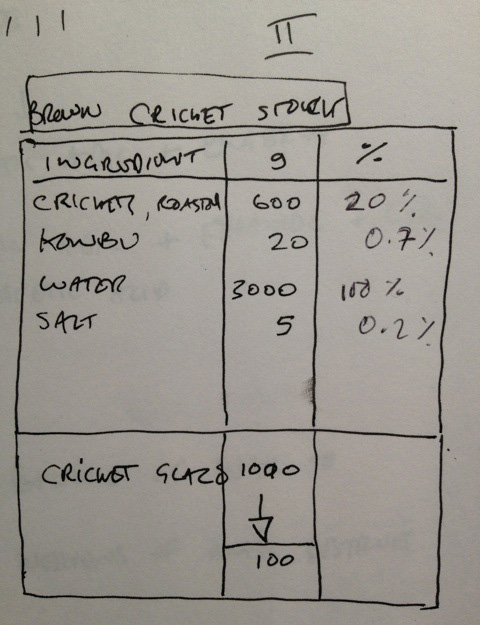
Final broth recipe
Base brown cricket stock
1000g 100% Water
200g 20% Crickets roasted, preheated Rational 160˚C for 18 minutes
4g 0.4% Sea salt
Combine in sous vide bag and cook @ 85˚C for 1 hour, then chill.
For the clarification & final broth
500g 100% Brown cricket stock, reduced by half, cold
165g 33% Crickets roasted in a preheated oven at 160˚C for 18 minutes
50g 10% Carrot, finely sliced 2mm
50g 10% Shallot, finely sliced 2mm
50g 10% Leek, finely sliced 2mm
80g 16% Chicken breast
50g 10% Egg white
10g 2% Grasshopper garum
Method
Puree chicken breast and egg white together at full power for 20 seconds. Mix ingredients together in a vacuum bag and seal under full vacuum. Cook at 85˚C for 1 hour, pass through a fine super bag, taste and adjust the balance of seasoning with a little grasshopper garum if necessary.
When preparing for larger numbers we cooked the clarification traditionally in a large stock pot.
At the Pestival event, we served alongside the roasted desert locusts.
